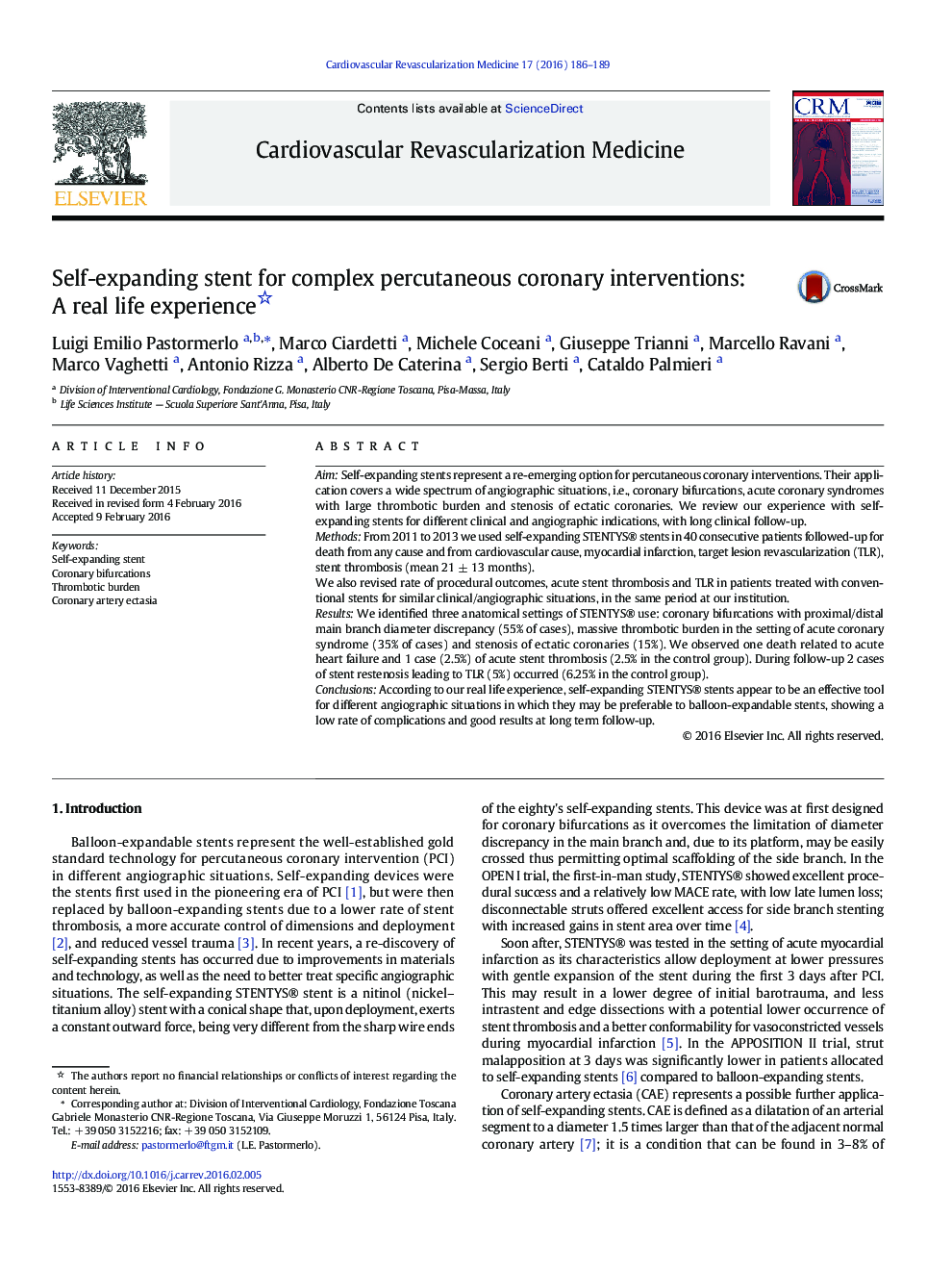| کد مقاله | کد نشریه | سال انتشار | مقاله انگلیسی | نسخه تمام متن |
|---|---|---|---|---|
| 5921083 | 1164861 | 2016 | 4 صفحه PDF | دانلود رایگان |

- STENTYS use in different and complex angiographic situations is revised.
- Optimal results in bifurcation lesions as compared with balloon-expandable stents
- Use in acute coronary syndrome with huge thrombotic burden
- Treatment of coronary stenosis in coronary artery ectasia
- Low rate of target lesion revascularization at long term follow-up
AimSelf-expanding stents represent a re-emerging option for percutaneous coronary interventions. Their application covers a wide spectrum of angiographic situations, i.e., coronary bifurcations, acute coronary syndromes with large thrombotic burden and stenosis of ectatic coronaries. We review our experience with self-expanding stents for different clinical and angiographic indications, with long clinical follow-up.MethodsFrom 2011 to 2013 we used self-expanding STENTYS® stents in 40 consecutive patients followed-up for death from any cause and from cardiovascular cause, myocardial infarction, target lesion revascularization (TLR), stent thrombosis (mean 21 ± 13 months).We also revised rate of procedural outcomes, acute stent thrombosis and TLR in patients treated with conventional stents for similar clinical/angiographic situations, in the same period at our institution.ResultsWe identified three anatomical settings of STENTYS® use: coronary bifurcations with proximal/distal main branch diameter discrepancy (55% of cases), massive thrombotic burden in the setting of acute coronary syndrome (35% of cases) and stenosis of ectatic coronaries (15%). We observed one death related to acute heart failure and 1 case (2.5%) of acute stent thrombosis (2.5% in the control group). During follow-up 2 cases of stent restenosis leading to TLR (5%) occurred (6.25% in the control group).ConclusionsAccording to our real life experience, self-expanding STENTYS® stents appear to be an effective tool for different angiographic situations in which they may be preferable to balloon-expandable stents, showing a low rate of complications and good results at long term follow-up.
Journal: Cardiovascular Revascularization Medicine - Volume 17, Issue 3, AprilâMay 2016, Pages 186-189